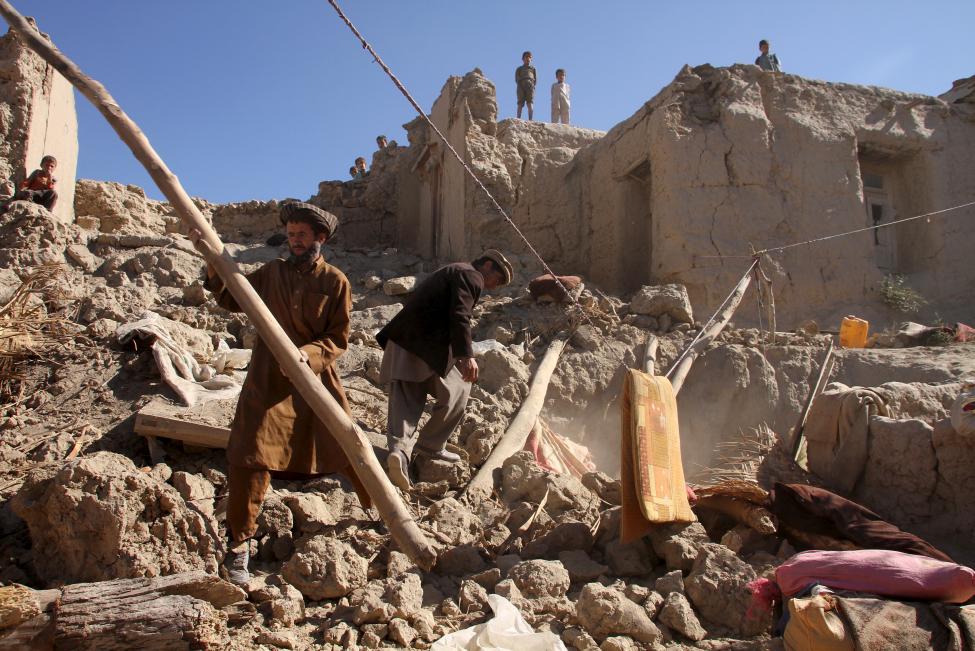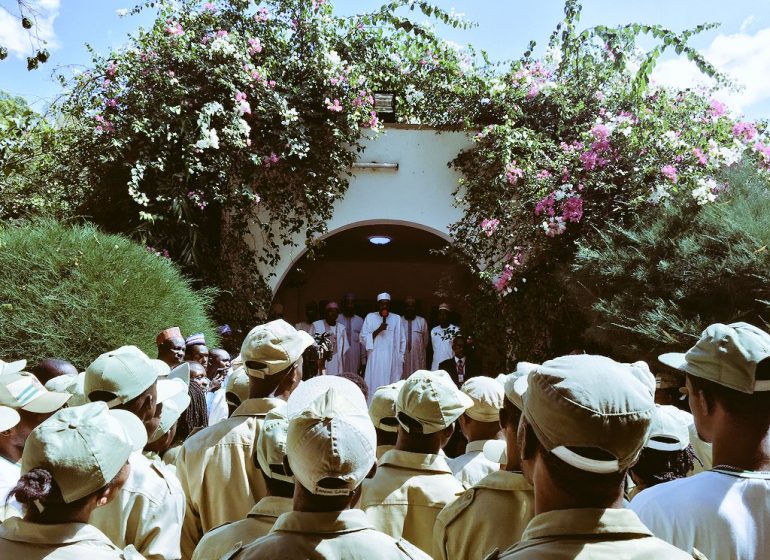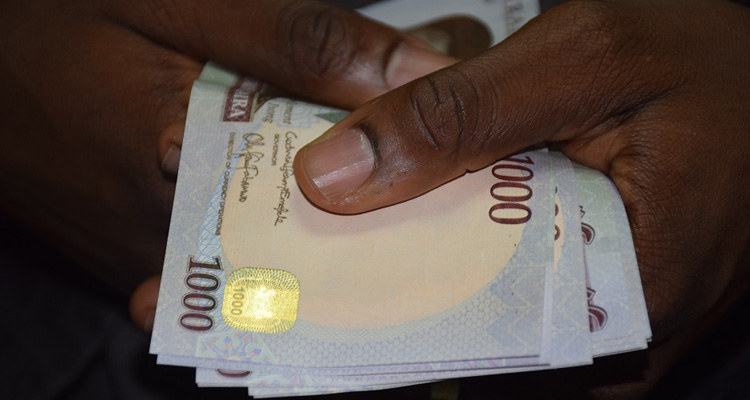Men look for their belongings after an earthquake, in Kishim district of Badakhshan province, Afghanistan October 27, 2015. REUTERS/Stringer
Earth tremors were recorded in Sambang Dagi in Jaba local government area of Kaduna state on Sunday and early Monday morning, leaving scores of people displaced.
Nasir el-Rufai, governor of the state, said the national geological agency had been notified and invited to investigate the tremors and provide appropriate guidance.
While the report of the agency, here are a few things to know about tragedies such as this.
EARTHQUAKE NOT EXACTLY THE SAME AS TREMOR
Advertisement
According to Herman Van Nierkerk, a professor of Geology from the University of Johannesburg, there is a difference between both, especially as it concerns the way we define it.
“The big difference is the way that we define it. A tremor is earthquake waves that are formed due to human activities, for instance, mine collapse,” Nierkerk said after a tremor in South Africa.
“While an earthquake produces earthquake waves due to natural processes; you know, when the tectonic plates actually move on the surface of the earth, which is what drives geology.”
Advertisement
Tremors and earthquake are usually used interchangeably, but a tremor is an earthquake of lower intensity.
TREMOR CAUSED BY STRESS ON ROCKS
Tremors are recorded as a result of stress on the rock plane of the earth crust, causing a necessary adjustment, which then drives a shift in the rocks beneath the surface of the earth.
Asked why tremors are experienced, the professor said: “The crust of the earth, on which we are actually standing, is under stress at the moment, and what happens with earthquakes (tremor) like this is that, the rock tries to move because they are under stress, and eventually, when they do move, the stress is being released. We have to ask ourselves what is causing this stress.”
Advertisement
Examples of such stress-causing activities are mining, drilling, digging, and constructing an heavy building.
Tremors have been noted to occur in core commercial areas, while earthquakes occur virtually anywhere, especially in places with high seismic activities.
SHOULD KADUNA EXPECT AN EARTHQUAKE?
Earthquakes and tremors are closely related, and the occurrence of one may lead to the other. But more often than not, the occurrence of a naturally-driven earthquake leads to a tremor.
Advertisement
Tremors do not necessarily lead to earthquakes. So Kaduna should not expect an earthquake but prepare for more tremors if the rocks have not let go of all its stress.
THINGS TO DO DURING AN EARTHQUAKE OR TREMOR
Advertisement
According to Ready, a US emergency preparation agency, the following should be done during a tremor or earthquake:
If you are inside a building:
Advertisement
- Stay where you are until the shaking stops. Do not run outside. Do not get in a doorway as this does not provide protection from falling or flying objects, and you may not be able to remain standing.
- Drop down onto your hands and knees so the earthquake doesn’t knock you down. Drop to the ground (before the earthquake drops you!)
- Cover your head and neck with your arms to protect yourself from falling debris. If you are in danger from falling objects, and you can move safely, crawl for additional cover under a sturdy desk or table.
- If there is low furniture or an interior wall or corner nearby, and the path is clear, these may also provide some additional cover.
- Stay away from glass, windows, outside doors and walls, and anything that could fall, such as light fixtures or furniture.
- Hold on to any sturdy covering so you can move with it until the shaking stops. Stay where you are until the shaking stops.
If getting safely to the floor to take cover won’t be possible:
- Identify an inside corner of the room away from windows and objects that could fall on you. The Earthquake Country Alliance advises getting as low as possible to the floor.
- People who use wheelchairs or other mobility devices should lock their wheels and remain seated until the shaking stops. Protect your head and neck with your arms, a pillow, a book, or whatever is available.
If you are in bed when you feel the shaking:
Advertisement
- If you are in bed: Stay there and Cover your head and neck with a pillow. At night, hazards and debris are difficult to see and avoid; attempts to move in the dark result in more injuries than remaining in bed.
If you are outside when you feel the shaking:
- If you are outdoors when the shaking starts, move away from buildings, streetlights, and utility wires. Once in the open, “Drop, Cover, and Hold On.” Stay there until the shaking stops. This might not be possible in a city, so you may need to duck inside a building to avoid falling debris.
If you are in a moving vehicle when you feel the shaking:
- If you are in a moving vehicle, stop as quickly and safely as possible and stay in the vehicle. Avoid stopping near or under buildings, trees, overpasses, and utility wires. Proceed cautiously once the earthquake has stopped. Avoid roads, bridges, or ramps that the earthquake may have damaged.







